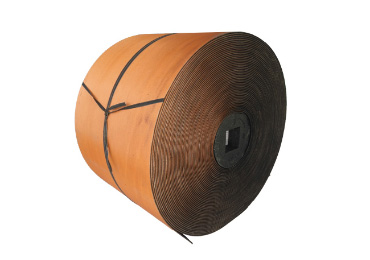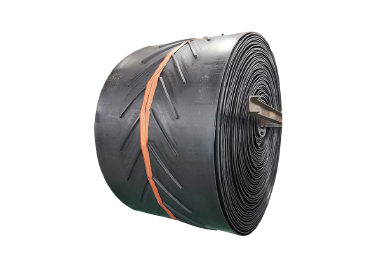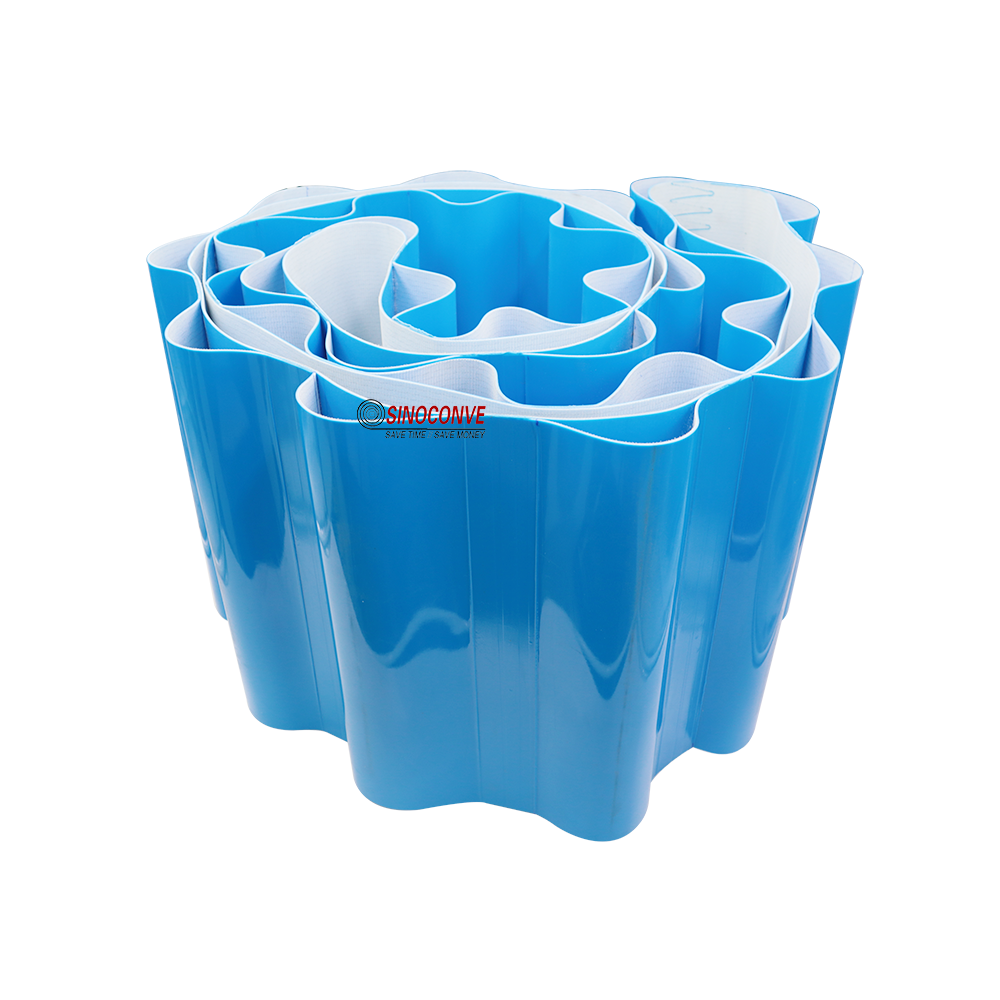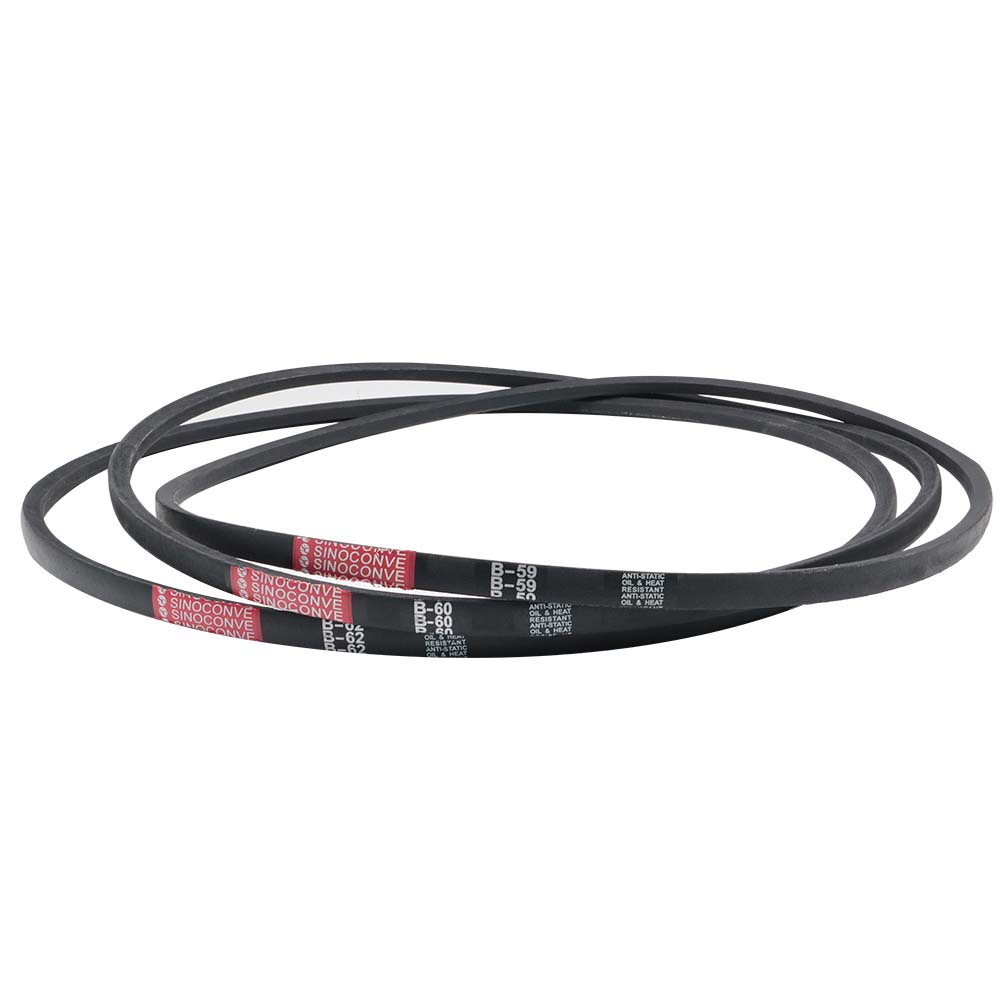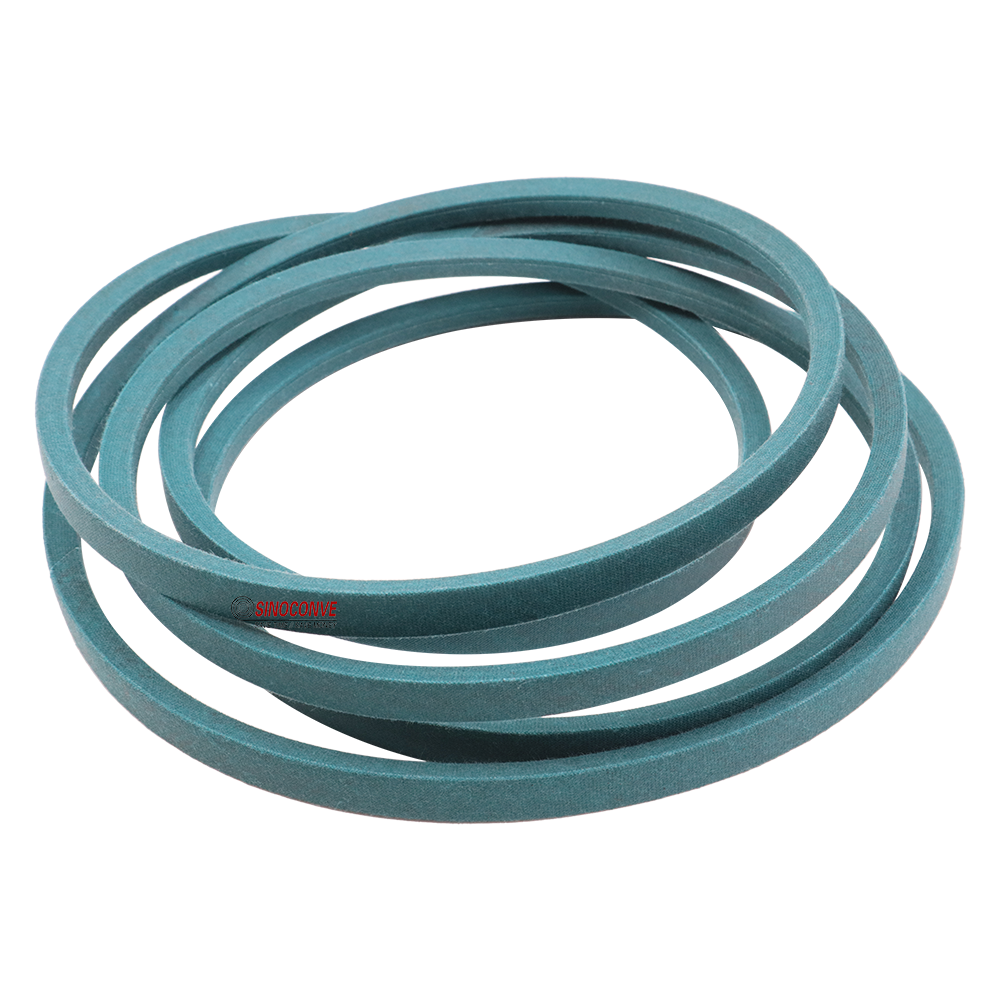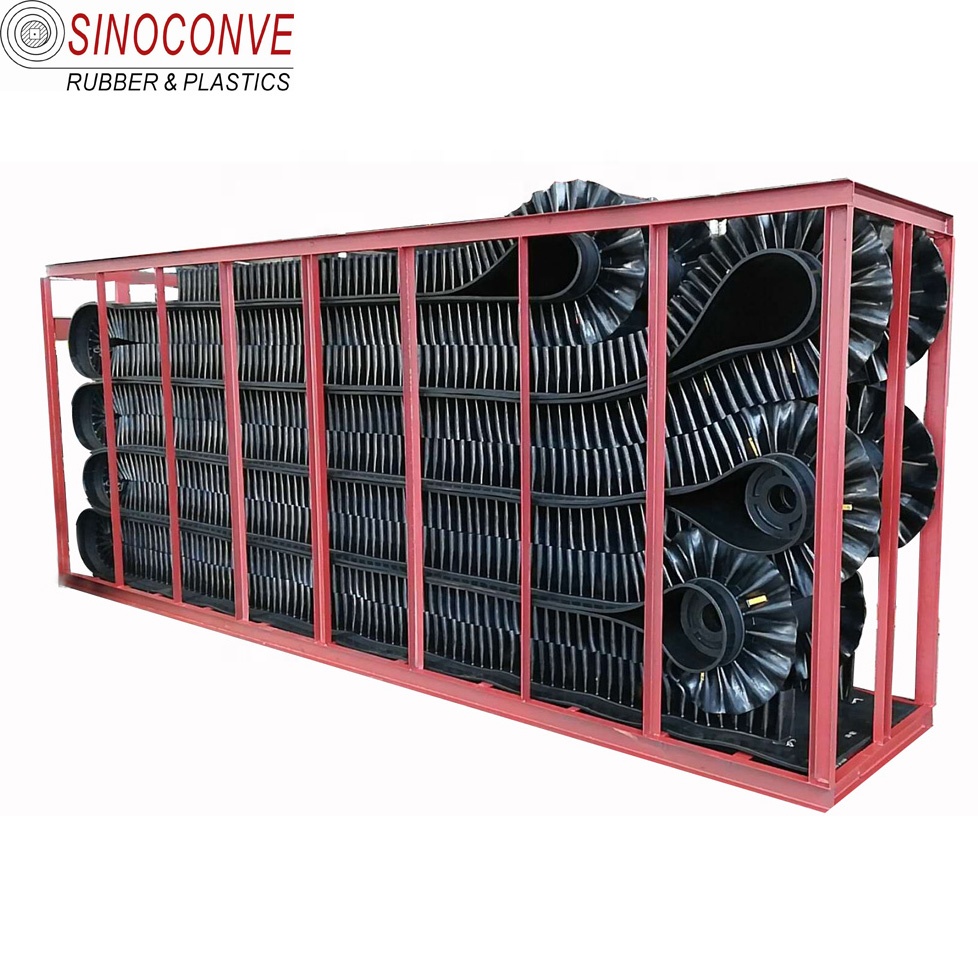
Sidewall Conveyor Belts: Space-Saving Solutions for Steep and Vertical Transport
What Is a Sidewall Conveyor Belt?
A sidewall conveyor belt is a rubber or PVC belt designed with corrugated sidewalls and cleats to move materials on steep inclines or vertical paths. Unlike flat belts, sidewall belts prevent material rollback and spillage by physically containing the load within the belt structure—even at angles up to 90 degrees.
Sidewall belts are often custom-built to suit specific system layouts and can include T-cleats, L-cleats, or C-cleats to stabilize materials between the sidewalls.
Key Advantages of Sidewall Belts
Sidewall conveyor belts offer several performance and design benefits:
-
Inclined and Vertical Conveying
Handles steep angles up to 90° without rollback or loss of control. -
Space Efficiency
Enables vertical lifting or Z-style layouts, saving valuable floor space. -
Reduced Spillage
Corrugated sidewalls and cleats keep loose or granular materials contained during transport. -
Flexible Layouts
Ideal for S-shape, L-shape, or Z-conveyor configurations in restricted plant spaces. -
Custom Cleat and Wall Configurations
Adaptable to material size, weight, and incline requirements.
Typical Applications of Sidewall Conveyor Belts
Sidewall belts are widely used in industries that handle bulk materials and require elevation change in a compact footprint:
-
Packaging Lines: Moving cartons, bags, or pouches between floor levels
-
Recycling & Waste Management: Transporting shredded plastics, scrap metals, paper, etc.
-
Mining & Quarrying: Steep incline conveying of sand, gravel, coal, and ore
-
Agriculture & Fertilizer: Moving grains, feed, seed, and fertilizers
-
Food Processing: Elevating fruits, vegetables, or grain-based products in a hygienic layout
-
Chemical & Powder Plants: Vertical transport of powder, resin, or granules with dust control
In all cases, the ability to move materials without rollback improves operational safety and throughput.
What to Consider When Choosing a Sidewall Belt
Choosing the right sidewall conveyor belt involves careful attention to the following:
| Criteria | Recommendation |
|---|---|
| Belt Base Material | PVC for clean/light-duty; Rubber for high-load or abrasive materials |
| Cleat Type & Height | Match cleat profile (T, L, C) to material flow behavior and particle size |
| Sidewall Height | Varies from 40 mm to 500 mm+ depending on belt width and capacity |
| Belt Width | Wider belts allow higher throughput; standard sizes range from 300–1600mm |
| Pulley Diameter | Choose pulleys sized to minimize belt stress and sidewall deformation |
| Layout Design | Z-shaped and S-shaped conveyors require flexible belts and reinforced cleats |
| Temperature & Chemical Resistance | Consider material contact conditions, especially in food or chemical handling |
Important: Always ensure cleats and sidewalls are vulcanized or bonded using heat-press techniques to avoid premature separation under load.
Why Choose Sinoconve’s Sidewall Conveyor Belts?
Sinoconve’s sidewall belts are custom-engineered for durability, strength, and flexibility, with:
-
Full support for PVC and rubber sidewall belts
-
Heat-press bonded cleats and sidewalls for long life
-
Custom cleat pitch, height, and profile based on your product and angle
-
Industrial-grade sidewall heights up to 500 mm
-
OEM/ODM support with low minimum orders and global shipping
-
ISO and SGS certified quality standards
We’ve supplied sidewall systems for packaging, food, mining, and fertilizer plants in 100+ countries with proven performance.
Elevate Your Conveying Efficiency
A well-designed sidewall conveyor belt can dramatically improve your material flow, reduce footprint, and prevent spillage—especially in tight plant layouts or high-throughput vertical systems.
📩 Talk to our engineers for layout support and belt selection via our homepage or contact page.

